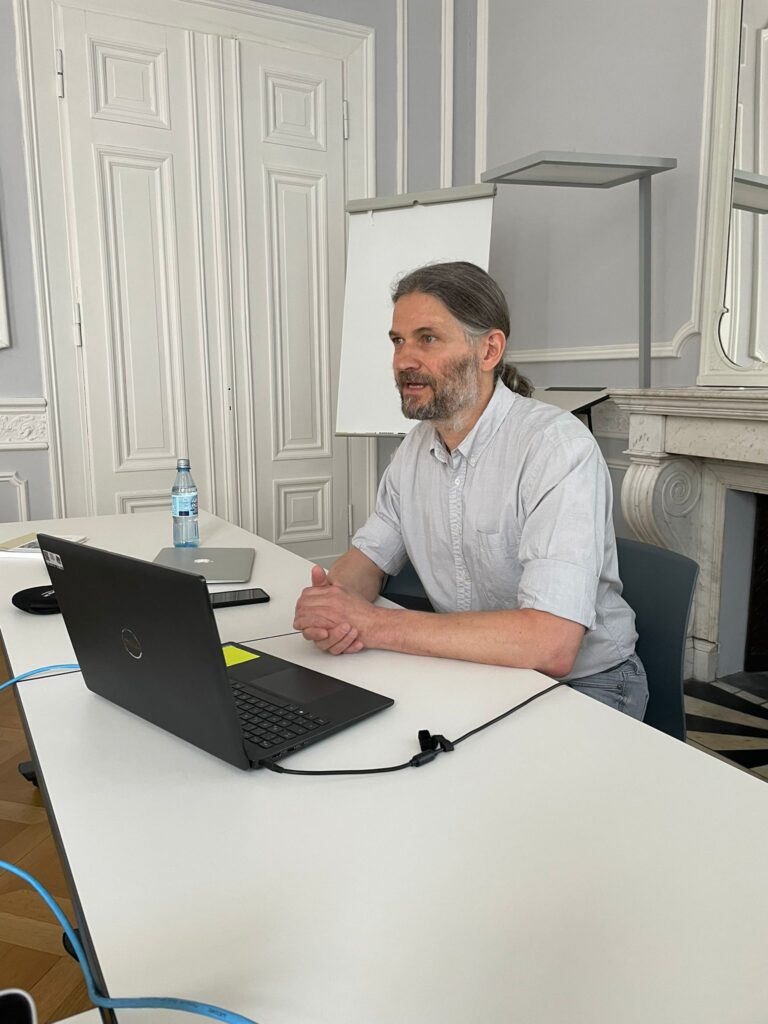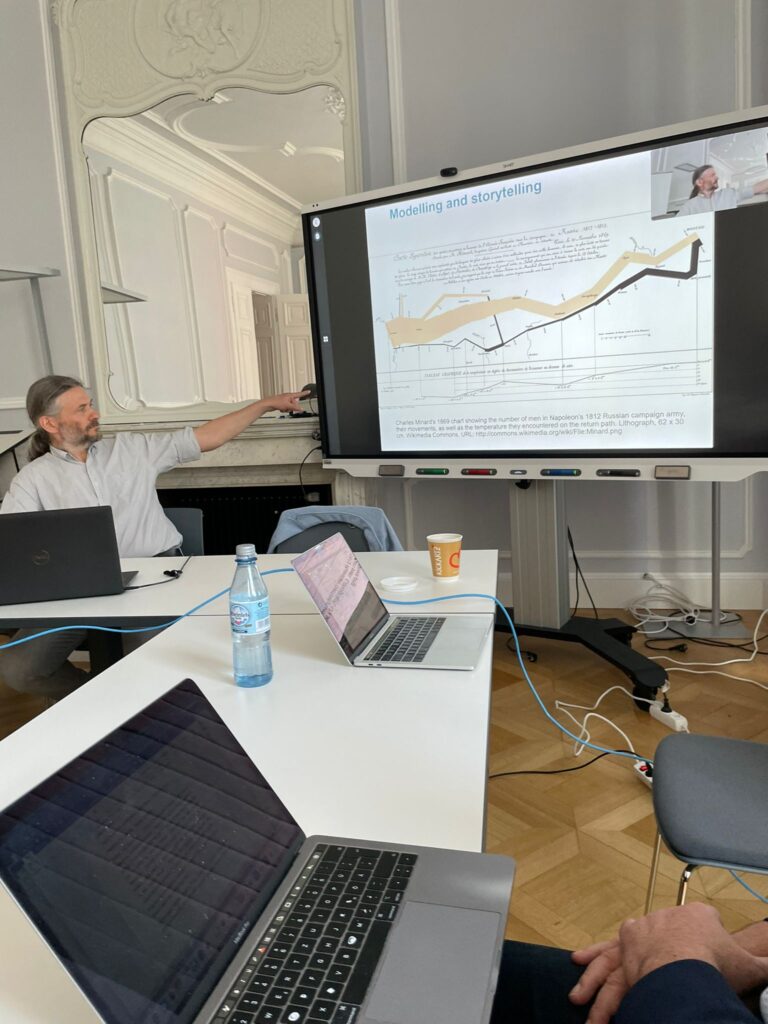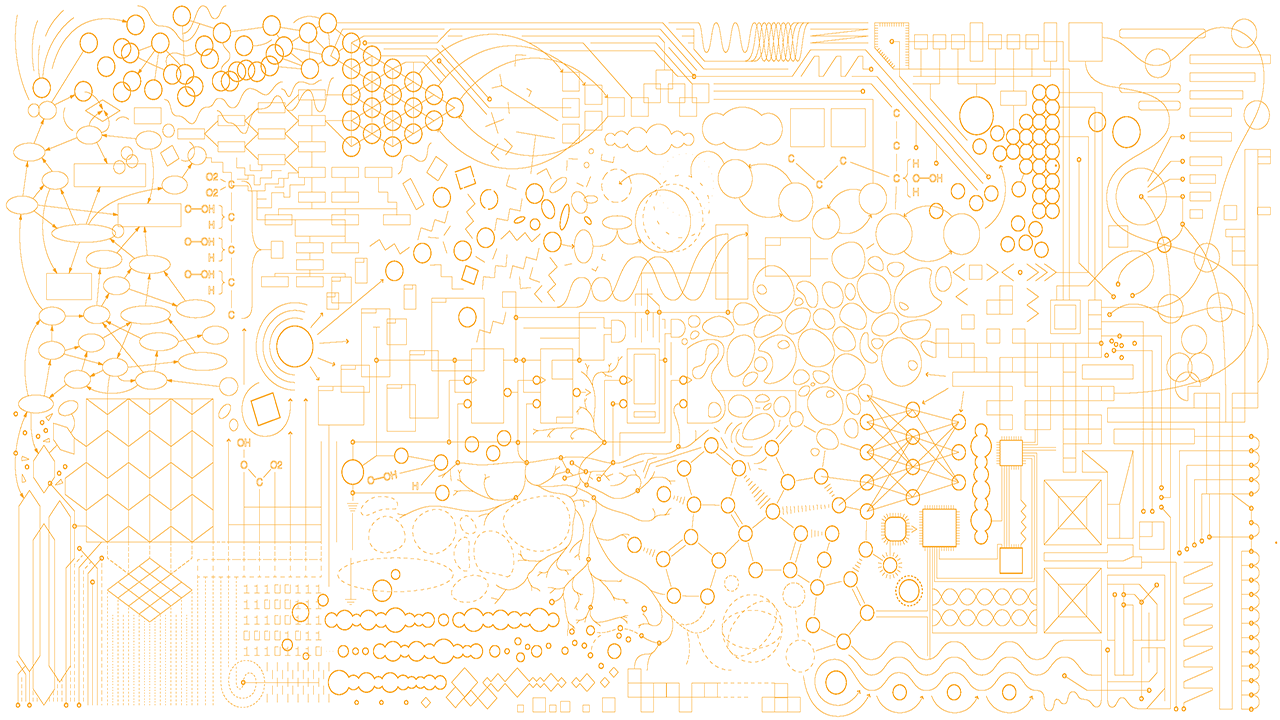
On May 24th, Professor Øyvind Eide delivered a talk at c:o/re on Modelling in digital humanities: between the sciences and the history of the humanities. Øyvind Eide is head of the Institute for Digital Humanities (IDH) at the University to Cologne. The insightful discussion on modelling that he opened revealed not only many common interests between c:o/re and IDH but also how, from the vantage point of digitalization, modelling appears as a key interest in Science and Technology Studies broadly.
Eide’s starting point is that it is misleading to claim a definition of model because anything can be a model of anything else. Efforts to pin it down can only be reductivist to how models are used or irrelevant. Rather, it is insightful to define modelling, as an activity driven by intention. Modelling has a target, namely what is being modelled. This semiotic relation, Eide explains, has to be understood as dynamic. This perspective avoids claims of epistemological objectivity, where represented is deemed unaffected by representation. Eide defines modelling as creative processes of thinking/reasoning that result in meaning, and the negotiation thereof, through the creation and manipulation of external representations. Further, while it escapes definition, a model must always be understood as a media product. Simply, models are mediated.
From this theoretical standpoint, Eide explained the importance and intricacy of numerical mathematics for the digital humanities. This involved a history of the humanities, in reference to notions and means of modelling, that encompassed a broad and illuminating taxonomy. To draw on the role of numerical mathematics in the development of digital humanities modelling, Eide presented the obstacles to be bridged between the scholarly tradition of the humanities and the epistemologies of digital technologies. In brief, the latter are characterised as analogous, continuous, nuanced and hermeneutical, while the latter are formal, rule-based, structured and discrete. This said, Eide further explained that “the computer is not in itself rigorous”.
Any effort to digitalise humanities research, which is a modelling effort, implies a process of intermedial translation. Examples are translating from a paper text page or a paper map page to a scanned text or map page, as a formal model, so to say, in the computer. Of course, from the perspective of the interpreting researcher, the text page is more similar to the scanned text page than to the paper map page. As such, reflection on how models operate at various levels is an analysis of media modalities. Addressing the reduction of complex mathematical models into numerical models, that are computable, then, supposes an intermedial theory of meaning.
These considerations reveal several regards in which a media and semiotic theory of modelling is relevant for contemporary science and technology studies, particularly but not only as an epistemological interest. Having started this dialogue, c:o/re and IDH will now be pursuing ways of collaborating in these directions. We are grateful to Professor Øyvind Eide for this insightful talk.




